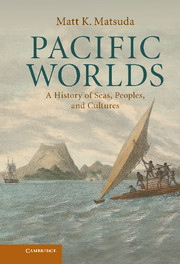Book contents
- Frontmatter
- Contents
- Illustrations
- Maps
- Acknowledgments
- Map
- Introduction: Encircling the ocean
- 1 Civilization without a center
- 2 Trading rings and tidal empires
- 3 Straits, sultans, and treasure fleets
- 4 Conquered colonies and Iberian ambitions
- 5 Island encounters and the Spanish lake
- 6 Sea changes and spice islands
- 7 Samurai, priests, and potentates
- 8 Pirates and raiders of the Eastern seas
- 9 Asia, America, and the age of the galleons
- 10 Navigators of Polynesia and paradise
- 11 Gods and sky piercers
- 12 Extremities of the Great Southern Continent
- 13 The world that Canton made
- 14 Flags, treaties, and gunboats
- 15 Migrations, plantations, and the people trade
- 16 Imperial destinies on foreign shores
- 17 Traditions of engagement and ethnography
- 18 War stories from the Pacific theater
- 19 Prophets and rebels of decolonization
- 20 Critical mass for the earth and ocean
- 21 Specters of memory, agents of development
- 22 Repairing legacies, claiming histories
- Afterword: World Heritage
- Notes
- Index
20 - Critical mass for the earth and ocean
Published online by Cambridge University Press: 05 June 2012
- Frontmatter
- Contents
- Illustrations
- Maps
- Acknowledgments
- Map
- Introduction: Encircling the ocean
- 1 Civilization without a center
- 2 Trading rings and tidal empires
- 3 Straits, sultans, and treasure fleets
- 4 Conquered colonies and Iberian ambitions
- 5 Island encounters and the Spanish lake
- 6 Sea changes and spice islands
- 7 Samurai, priests, and potentates
- 8 Pirates and raiders of the Eastern seas
- 9 Asia, America, and the age of the galleons
- 10 Navigators of Polynesia and paradise
- 11 Gods and sky piercers
- 12 Extremities of the Great Southern Continent
- 13 The world that Canton made
- 14 Flags, treaties, and gunboats
- 15 Migrations, plantations, and the people trade
- 16 Imperial destinies on foreign shores
- 17 Traditions of engagement and ethnography
- 18 War stories from the Pacific theater
- 19 Prophets and rebels of decolonization
- 20 Critical mass for the earth and ocean
- 21 Specters of memory, agents of development
- 22 Repairing legacies, claiming histories
- Afterword: World Heritage
- Notes
- Index
Summary
Three hours north of Auckland, New Zealand, in the waters around Moutapere Island lies one of the most famous wrecked ships in the world. The Rainbow Warrior is today an artificial reef, encrusted with polyps and festooned with kelp and sea grass, the ocean home of schooling fish, fluorescent jewel anemones, and speckled moray eels. This seems appropriate for a ship once registered to Greenpeace, the globally activist environmental organization. How the ship came to be lying under more than eighty feet of ocean is a story that goes back at least to the final days of the Pacific War and engages the history of colonialism and decolonization, especially in the French and American territories.
On August 6, 1945, the American B-29 bomber Enola Gay passed over the Japanese city of Hiroshima and dropped a single weapon, the “Little Boy.” As the atomic bomb exploded, some 70,000 Japanese were instantly killed and a square mile of the city incinerated. Much more of the city went up in flames and as many as 140,000 people staggered out with trauma and injuries, dying in the next few months. The blast collapsed buildings, melted steel, and left shadows on stone buildings where passers-by had been instantly vaporized. Survivors were left with disfiguring burns. The atomic bomb also brought something never seen before in warfare, with the power to terrify across generations: radiation sickness, and a growing documented record of leukemia, cancer tumors, birth defects, and deformities, some immediate, some developing over the course of years.
- Type
- Chapter
- Information
- Pacific WorldsA History of Seas, Peoples, and Cultures, pp. 315 - 334Publisher: Cambridge University PressPrint publication year: 2012



